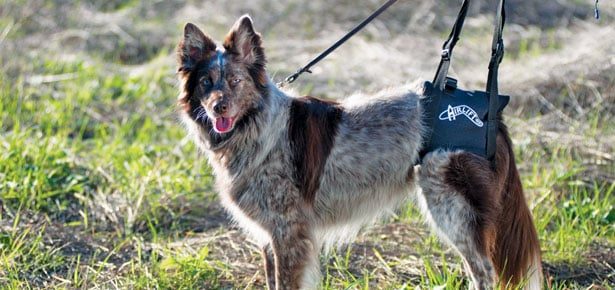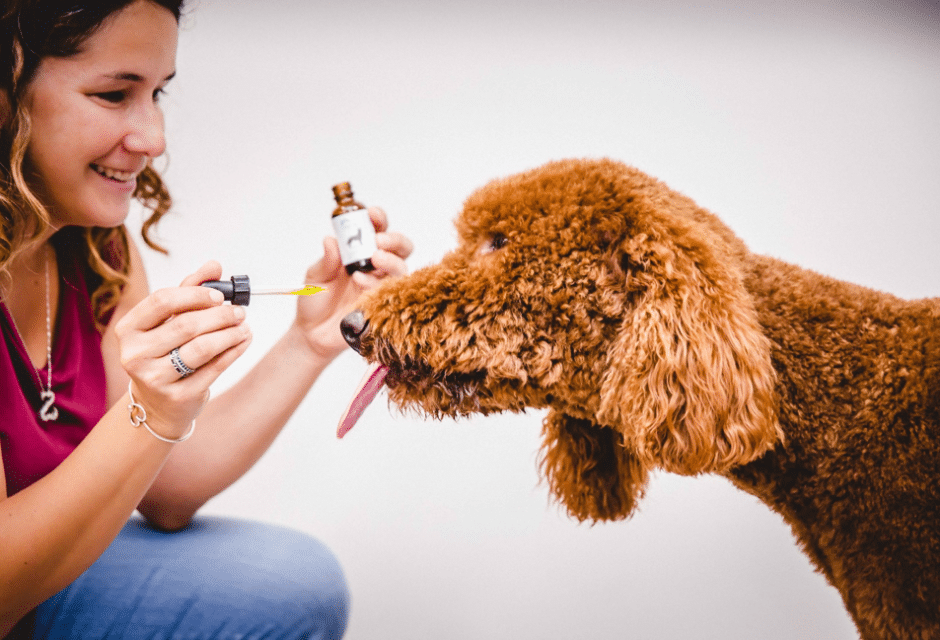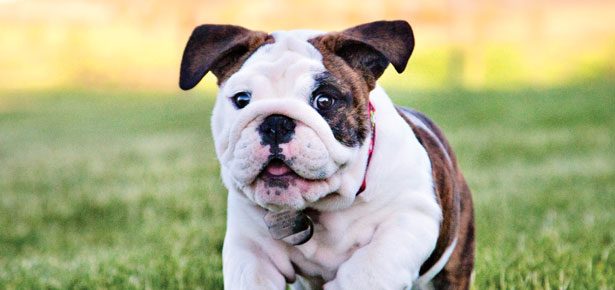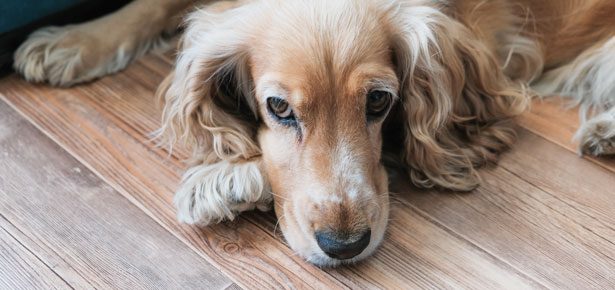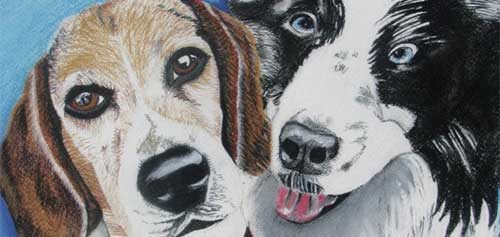
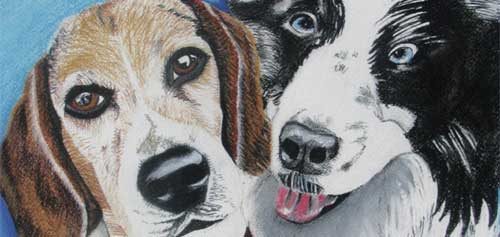
Do Dogs Need Canine Friends?
Just who are "play dates" really for?
The woman had grey hair with faint blue overtones and in her arms she clutched a coffee-coloured Pomeranian. The dog’s name was Max and he was around nine months old. Max was a tiny dog, and on the ground he would probably only stand around 8 inches at the shoulder, and weigh around 7 pounds. The woman’s name was Greta, and she was quite emotional as she explained her problem to me.
“I know that Max needs to have doggie friends, but he is so small that I don’t feel safe when we are at the dog park. There are Rottweilers there that could hurt or kill him, and when the retrievers start to play, they are so rough that they might injure him even if they didn’t mean to. Yesterday, there was a spaniel and one of those small sheepdogs there and I thought it might be safe, but instead they knocked him over and made him yelp and run away.
“I’ve been told that dogs are like kids, and if they don’t have friends of their own kind, they can become neurotic. What should I do?”
There are many myths about dogs based on the presumption that they are something other than a unique species. One can easily imagine that when Greta was rearing her own children she carted her three kids around to participate in soccer games, swimming, and various recreational activities so that they could form friendships with other children. Dogs, however, are not children.
Some people feel that dogs must have canine companions because they are derived from wolves, which are cooperative hunters and are supposed to form deep lasting friendships and allegiances within their packs. This is a misinterpretation of the social structure of wolves. Researchers Traci Cipponeri and Paul Verrell of Washington State University at Pullman, studied the relationships among wolves and found that, except for individuals that were related to one another, their social interactions could be described as “uneasy alliances” among individuals with both shared and conflicting interests. The relationships are much more like individuals in the same corporation who work together toward similar goals, but each has his or her own ambitions to get ahead of everyone else. There are clearly social interactions here, but not true friendships, except with those other wolves that are bound by direct kinship. Fortunately, dogs are not wolves.
In the thousands of years since humans first domesticated dogs, we have genetically manipulated them to socialize easily and to show friendliness almost indiscriminately. Dogs that have been properly socialized will congenially approach virtually anything that is alive, regardless of its species, and, unless they receive hostile signals, they will attempt to establish a good-natured relationship.
The bond that dogs can establish with other species is often dramatic and poignant. For example, there is the case of a Labrador Retriever named Puma. One cold day in Bristol, England, a gang of boys stole a kitten, threw it into a pond and waited to watch it drown. Suddenly, Puma dashed into the pond to grab the kitten. He must have thought that this was some sort of accident, because he brought the kitten out of the water and laid it at the boys’ feet. They just laughed and threw it back into the water. Puma again leapt into the water, but this time swam across to the other side of the pond with the kitten and ran home with it. When his family opened the door he rushed past them and laid the kitten down next to the heat vent. He would not let his family take the kitten out of his sight, so they felt that they had to keep it. They named the kitten Lucky, because he was so lucky to find a friend like Puma. The dog and cat established a life-long bond, playing together, sleeping together and apparently drawing comfort from each other. This is consistent with the idea that, although dogs are happiest when they are in a social situation, the species that that they are interacting with is less important than the quality of the interactions.
In some respects, we have bred dogs to be perpetual puppies. When in the company of other dogs, their natural inclination is to act like puppies, with playful games of chase or wrestling with that rough and tumble frenzy similar to what we see in human children of preschool age. This can produce bonds of friendship between dogs and can generalize to become a positive and friendly attitude toward all other canines. However, in some cases, such forms of rough play can produce antagonistic relationships and attitudes. This is not uncommon when dogs have been allowed to run in an off-leash park area or have been placed in a doggie daycare where they interact with dogs of mixed sizes and temperaments in a generally unsupervised way. Under such circumstances, dogs may actually develop a general hostility or fear toward all unfamiliar dogs rather than acquiring canine friends.
Although most dogs prize human companionship, the form of the relationship between dogs and humans is not exactly what we would call friendship. Research conducted at Eötvös Lorand University in Budapest, Hungary, indicates that the bond between a dog and its owner is more like the bond between children and their parents. This has been explored using the same kinds of research methods that psychologists use for testing children.
For example, the researcher Adam Miklosi used something called the “strange situation test,” which is often used to measure the attachment between a mother and her child. Basically this involves placing the child in an unfamiliar environment. If the mother or someone familiar is not present, children often act as if they were anxious and uncomfortable. However, if they have a warm and loving relationship with their mother, when she is nearby, even if she is not making an effort to interact with her offspring, the child seems to relax and soon starts to happily explore this new and strange world. Miklosi found the same behaviour in dogs, suggesting that dogs are bonded to their human owners in the same way children are bonded to their parents.
The explanation for the nature of the human-canine bond is that thousands of years of co-existence have caused dogs to become dependent on humans.
“The stronger the attachment between a dog and its owner, the more likely it is to behave in a socially dependent way, relinquishing its powers of independent thought and action but at the same time drawing feelings of emotional comfort and safety from the presence of familiar humans,” Miklosi explains.
The head of the Budapest team, Vilmos Cysani, explains that the selective breeding of dogs over time has produced animals that form strong bonds and are predisposed to learn and obey rules, but also to have emotional empathy with humans. Cysani claims that “the dog’s natural environment is the human family or other human social settings,” so it should not be surprising to find that the company of humans is quite sufficient to keep a dog happy, and the company of other dogs, while often pleasant and fun for the dog, is not really necessary.
None of this should be taken to mean that dogs cannot form close friendships and strong bonds with other dogs. Take the case of Mickey and Percy. Mickey was a Labrador Retriever owned by William Harrison, while Percy was a Chihuahua that had been given to Harrison’s daughter, Christine. Normally, their size difference might have prevented the dogs from becoming friends; however, in this instance, they became playful pals. The dogs would chase each other around, or Mickey would lie on the ground and let Percy pretend to be dominant as the little dog jumped on him and mouthed his ears. They ate together and, when they slept, Percy would lay against the bigger dog to stay warm.
One warm summer evening, the dogs were out on the front lawn playing one of their favourite chase games, and, as he often did, Percy made a wide circle at high speed in an attempt to get behind Mickey. Unfortunately, this time his path took him out into the street and he was hit by a car.
The first one on the scene was Mickey, who barked and whined and nosed his little friend. Then, while Christine stood by weeping and Mickey watched attentively, William placed the dead dog in a crumpled sack and buried him in a shallow grave in the garden. The depression that had fallen on the family seemed to affect not only the humans, but also Mickey. The big dog sat despondently staring at the grave of his friend, while everyone else went to bed. He would not come into the house when he was called, so William left the back door open except for the screen door, in order to allow him to hear Mickey if he decided that he wanted to come into the house.
A few hours later, William was awakened by frantic whining and scuffling outside the house. When he investigated the noise, he saw, to his horror, that the sack in which he had buried Percy was now laying empty beside the opened grave. Next to it he saw Mickey, who was in a state of great agitation, standing over Percy’s body, frantically licking his face, and nuzzling and poking at the limp form in what looked like a canine attempt to give the dead dog the kiss of life. Tears filled the man’s eyes as he watched this futile expression of hope and love.
He sadly walked over to move Mickey away when he saw what looked like a spasm or twitch. Then Percy weakly moved his head and whimpered. It was his friendship with Percy that had kept Mickey close that night. There was also something deep within him that had sensed that there was a faint spark of life in the little dog, combined with some mysterious instinct to return his companion to him that had told him what to do. He would not give up on his friend. Because of this bond between the dogs, they would be able to romp and play again, and once more share the warmth of life and their canine companionship.
Join the newsletter and never miss out on dog content again!
"*" indicates required fields
By clicking the arrow, you agree to our web Terms of Use and Privacy & Cookie Policy. Easy unsubscribe links are provided in every email.

